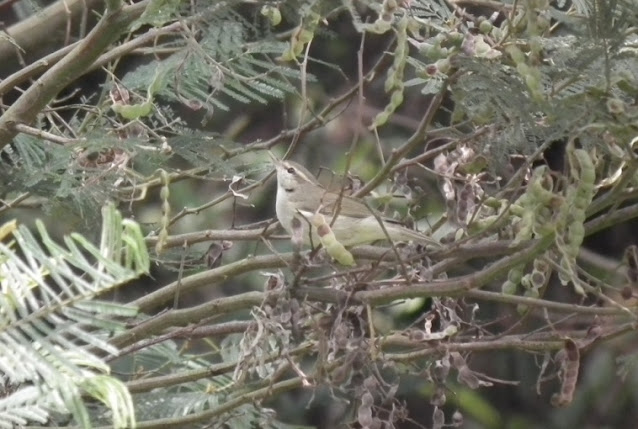Also called Greenish Warbler, it is an arboreal bird found in thickly wooded areas. It actively moves through the thickets, singly or in pairs and is quite common.
It has a greenish-grey body with dull white abdomen. There is a distinct white strip running above its eyes.
Pune zoo
I had last visited Katraj Snake Park in 1997. In those days, the snakes were placed in several enclosures and snake pits. There was nothing interesting for visitors to the park. The zoo was just an open grassy land where some animals from the Peshwe Park were shifted. However, the zoo (Rajiv Gandhi Zoological Park, as it is now called) has changed for the better. Fourteen years later (in 2011), the trees have grown bigger and taller. There is dense undergrowth in the surroundings and in the tiger and leopard enclosures. The animals are not caged in dingy cells, but roam about freely in their enclosures. The zoo has been rated as sixth best in India by the Central Zoo Authority. There is also a small lake where boating is permitted. It is a good way of spending your holiday, especially if you have only visited the unimpressive Rani Bagh in Mumbai.
If you do visit the zoo, be prepared for a long and tiring walk if you wish to see all the animals. The reason is, the pathways, although well paved, have not been planned for visitors on foot. Towards the far end of the zoo are located the black buck and wolf enclosures, with the elephant about 200m beyond that. However, there is no direct way out of the zoo from there, except retracing your steps all the way back to the exit. No wonder, many of the visitors skip the elephant enclosure.
For those who wish to avoid walking, there is a battery operated van, which takes you around the zoo. One has to purchase separate tickets for the van; take it only if you are too tired to walk.













